How SWIFT gpi has transformed cross-border payments
Key Takeaways
- SWIFT gpi enhances speed, transparency, and traceability of payments.
- Data-rich ISO 20022 facilitates real-time payments.
- Planned upgrades will bring more streamlined global payment landscape.
In the fast-paced world of financial markets, especially foreign exchange (FX), faster payments are more critical than ever. The global push for efficient, transparent transactions, as outlined in the G20’s 2027 roadmap, underscores this need. Real-time payments help institutions manage liquidity, reduce counterparty risk, and seize market opportunities.
Established in the 1970s, SWIFT (Society for Worldwide Interbank Financial Telecommunication) has been the global standard for secure communication between financial institutions, supporting millions of transactions daily and playing a crucial role in the global financial system. It facilitates cross-border payments, securities transactions, and trade finance.
Building on this foundation, the 2017 launch of SWIFT Global Payments Innovation (gpi) marked a significant milestone.
Let’s take a look at the development of SWIFT gpi and how it affects cross-border payments.
SWIFT gpi’s progression
SWIFT gpi modernizes international transactions, enabling faster, easily traceable payments with full transparency. Today, more than 4,000 financial institutions use it.
Since its inception, SWIFT gpi has reached several landmarks. In 2018, it introduced the Unique End-to-End Transaction Reference (UETR), enabling global payment tracking even for non-gpi members. By 2019, SWIFT extended gpi to corporates, allowing large enterprises greater visibility into payments across multiple banks. By end-2019, nearly 60% of all SWIFT international transfers used gpi, highlighting its rapid adoption. In 2021, SWIFT launched SWIFT Go for low-value transactions, providing a fast, secure payment experience for consumers and SMEs, and enhancing cross-border payments.
Today, major banks like ABN AMRO, Bank of China, and Citi use SWIFT gpi, which now enables almost 50% of payments credited to end beneficiaries within 30 minutes, and nearly 100% of payments are credited within 24 hours.
It is often compared to Amazon’s parcel tracking service due to its UETR, and builds on SWIFT’s infrastructure with features like pre-validation and case resolution, reducing errors and enhancing speed and reliability for a better customer experience in cross-border payments.
ISO 20022 to benefit SWIFT gpi
While SWIFT gpi has greatly improved the traditional SWIFT experience and international payments overall, the ongoing migration to ISO 20022, set for completion by November 2025, promises even greater enhancements.
This shift will enable richer, more structured data exchange, further boosting the speed and efficiency of cross-border transactions. ISO 20022 enhances straight-through processing (STP) with a more structured messaging format, reducing manual intervention and errors.
ISO 20022 plays a critical role in facilitating instant cross-border payments by standardizing communication and data sharing across networks such as SWIFT gpi. This standard enables seamless, real-time cash movements and improves liquidity for corporate treasurers, enhancing FX risk management and centralizing cash portfolios.
ISO 20022 makes real-time data exchange smooth and easy across both local and international transactions, allowing SWIFT GPI to operate around the clock and offer quicker, more transparent services, says Isabelle Poussigues, Head of Cash Clearing Offer, GTPS, Societe Generale.
Aligning with the roadmap
The G20 Roadmap for Enhancing Cross-Border Payments, targeting faster, cheaper, more transparent, and accessible payments by 2027, carries significant implications for SWIFT gpi.
When it comes to payment speed, SWIFT gpi is already ahead of the curve, processing 90% of cross-border payments within an hour. But to fully meet speed goals, it needs to address delays at the domestic level by working with local banks and regulators.
SWIFT gpi has significantly boosted transparency in cross-border payments by enabling real-time tracking and clarity on fees and processing times. These improvements ensure visibility for all transaction parties, supporting G20 goals for payment transparency.
Tools like SWIFT Go bring this visibility to small businesses and consumers, while SWIFT Securities View extends similar tracking benefits to securities transactions, helping to prevent costly settlement fails.
Interoperability—a key priority of the roadmap—is being strengthened through the adoption of ISO 20022, supported by SWIFT gpi. This adoption enables seamless data exchange between financial institutions, improving payment efficiency and accuracy.
The expansion of SWIFT’s reach to more financial institutions, including smaller banks and non-bank entities, also aligns with the G20’s goal of making cross-border payment more accessible.
Shaping the future of cross-border finance further
With several milestones reached since its inception, SWIFT gpi is poised for further evolution.
Its future iterations are set to integrate distributed ledger technology to reconcile banks’ nostro databases – records monitoring banks’ cash and assets held in foreign banks – by creating a more transparent, real-time ledger of these accounts.
Its planned Stop and Recall Payment service – allowing banks to halt or reverse initiated payments, even while en route to the recipient – aims to address fraud, errors, or compliance issues.
The gpi COVER service is designed to streamline and enhance transparency for payments that involve intermediary banks.
SWIFT gpi revolutionizes cross-border finance by enhancing speed, transparency, and traceability, supporting the G20’s goals for efficient global payments. With quicker settlements, real-time tracking, and improved data through ISO 20022, it ensures reliable transactions. Future upgrades will further solidify SWIFT gpi’s role in shaping the future of international finance.
Don't miss out
Subscribe to our blog to stay up to date on industry trends and technology innovations.


